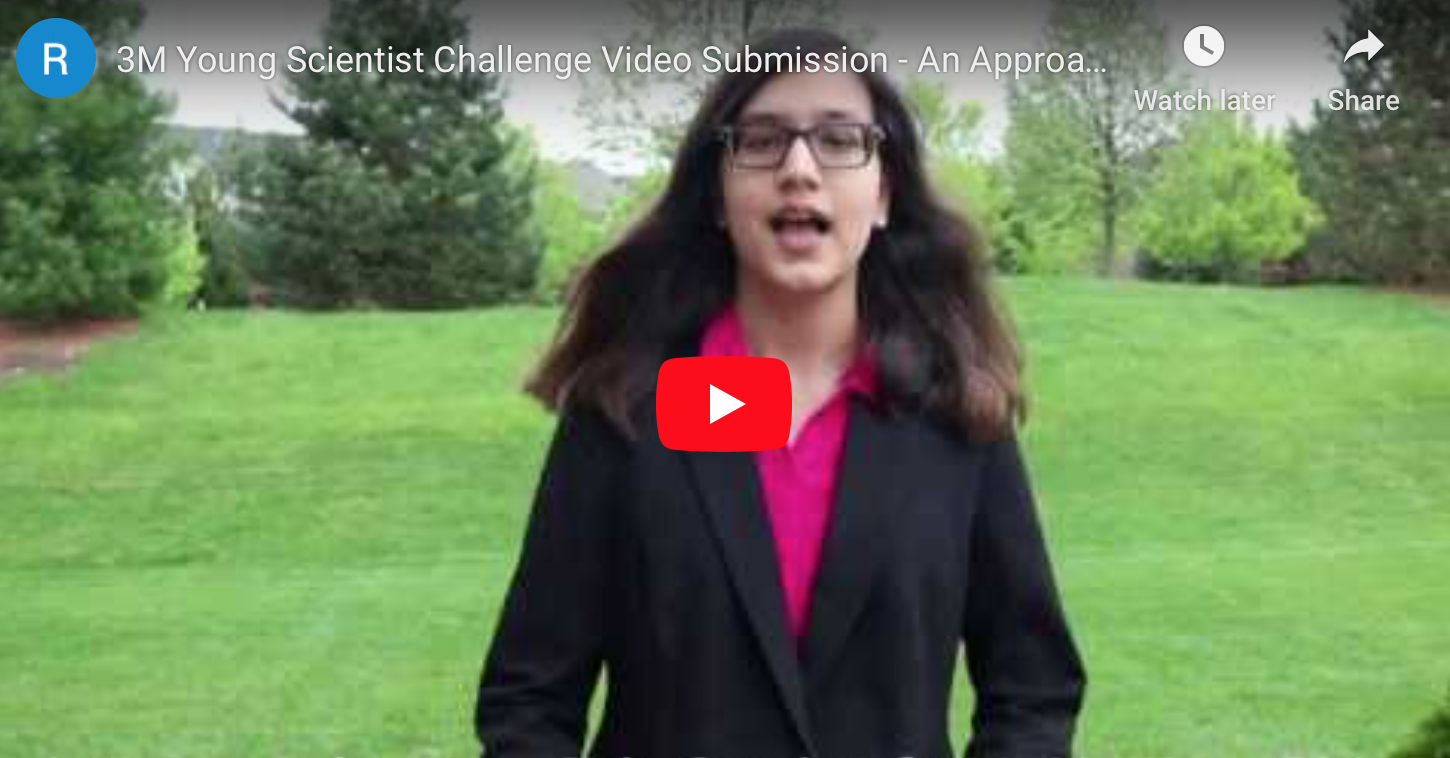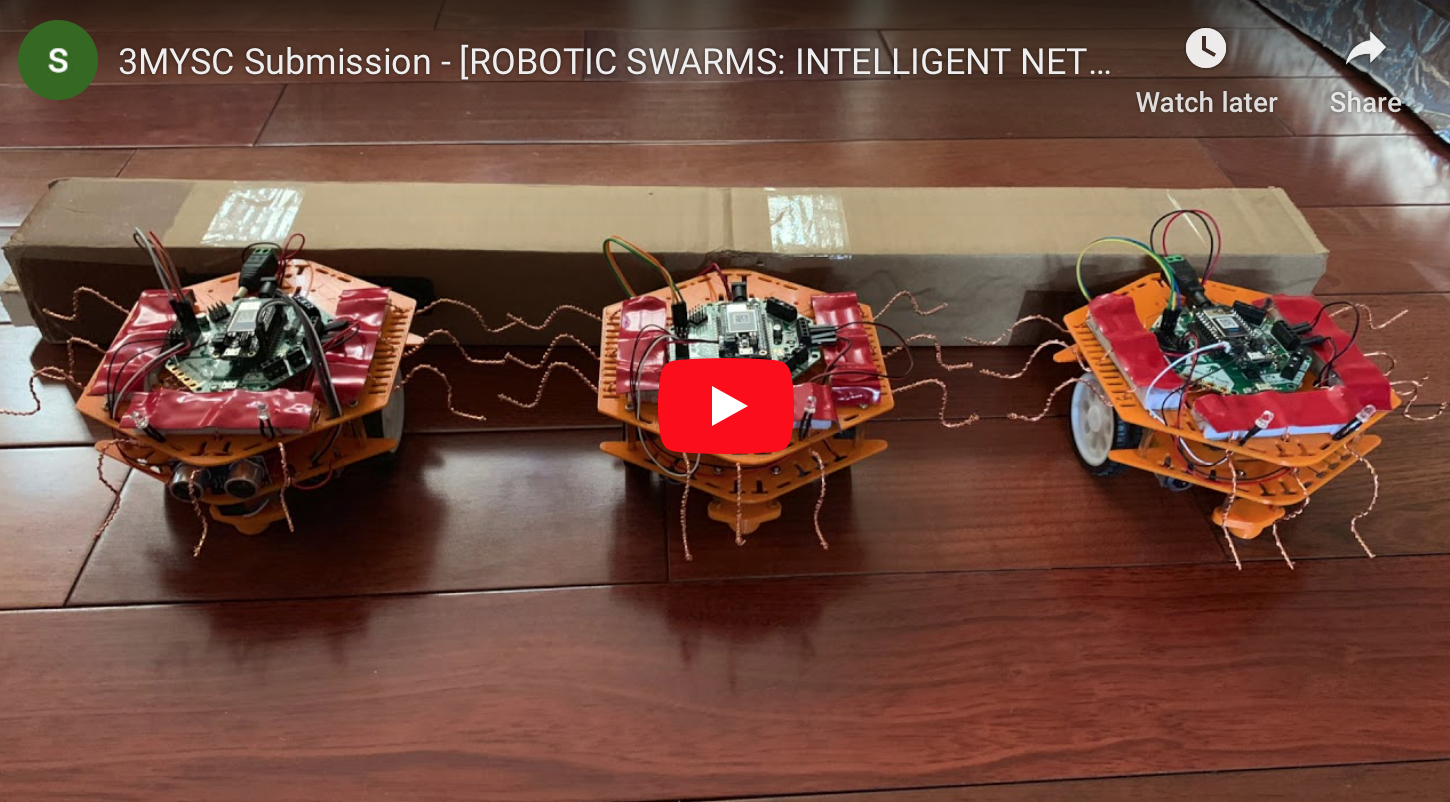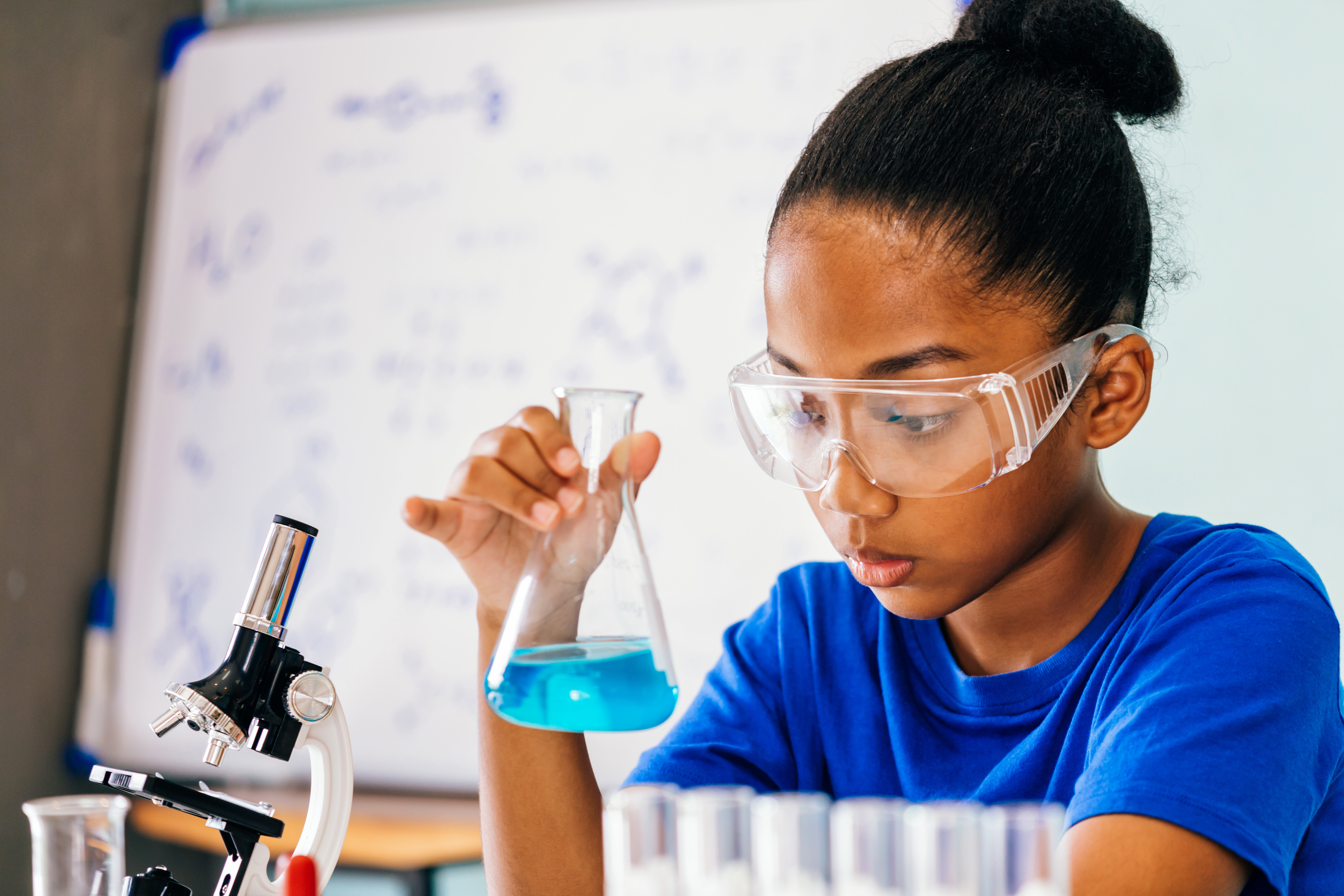What if you could invent a new anti-influenza drug to better help the world through flu season? What if you could replace the sand in concrete with muck, making it stronger while helping the environment? What if you could use neural networks to detect early fruit disease in crops, and what if you could learn enough about swarm intelligence to 3-D print your own army of robots?
Now imagine you are in middle school pitching your concept to a 3M mentor.
These four ideas are among the top 10 competing in this year’s 3M Young Scientist Challenge, hands-down the coolest middle school science contest around. Originally designed to “foster a new generation of American scientists at an age when interest in science generally declines,” the challenge (now in collaboration with Discovery Education) encourages students in grades 5-8 to submit problem-solving ideas by video for a chance to bring their innovation to life with a 3M mentor.
This year’s finalists – four girls and six boys, ages 12 to 14 – identified problems they found in everyday life and then explained, in riveting two-minute videos, how their solutions could make the world better. They are now working with 3M mentors and the grand winner will be announced in October.
We caught up with the four female finalists to ask about their ideas and what they want other girls their age to know about thinking big and following their passions.
Seriously, you have to meet these girls.

Ê: Laasya, what made you first think about using neural networks to detect fruit disease and when did you know your solution was viable?
LA: Last year during a family trip to an orange orchard, I saw a lot of food go to waste due to diseased fruits. After speaking with a farmer, I found that a single fruit can spread its disease to others. Globally 300-400 million tons of crops are lost in only the harvesting phase because of bacterial, viral or fungal infections. Even a small improvement in this can help address the 815 million malnourished people around the world. Early detection of fruit disease is of paramount importance to prevent these losses and overall yield. However, current detection systems involve farmers having to manually go out and check for diseased crops, which is neither time-efficient nor feasible.
I had already been experimenting with neural networks, Raspberry Pi (a powerful small computer) and TensorFlow. I began wondering: was there a way for me to create a quick and affordable solution that could detect crop diseases through the use of imaging? I knew my solution was viable after it was able to achieve a high accuracy and was tested through the use of a dataset consisting of oranges. Even before I was able to innovate a new system, I knew that a solution would be immensely helpful to many orchards and farms.
Ê: We love the idea of reducing food waste “one crop at a time;” how far do you think your idea could be scaled if you had a portable model?
LA: Ideally, I’d love to have my prototype be implemented in farms and orchards all around the world! My current model is simple and easy to use and doesn’t require WiFi or internet access – which many places may lack – and is fairly inexpensive. All in all, I think my idea could be scaled fairly far.
Ê: What does having a 3M mentor mean to you?
LA: Being able to work with a real scientist is a dream come true! My mentor, Tesha Alston Dampier, has been extremely helpful in this process of innovating and further advancing my project. I’m able to see firsthand how scientists work through and solve problems in their field. These are scientists who have a drive to change the world and improve the quality of human life. They’re passionate about their ideas, and therefore can accomplish so much, all of which is beneficial to people worldwide. My mentor has given me insight on how to advance my project and make my innovation even better. This has been an exciting opportunity of a lifetime!

Ê: Anika, do you think your strategy to combat Influenza could help stop other viruses in their earliest stages and, if so, which ones?
AC: Finding a potential cure to the Influenza virus is only the start of a long journey of drug discovery. My process can be used as the first step in finding potential cures and I have great confidence that this methodology will hasten the invention of new treatments to benefit the world.
Ê: How did the rise of COVID-19 impact your thinking about virus pandemics and the importance of early intervention?
AC: About a year ago, I started my research project in hopes of finding a novel anti-Influenza drug that could better help the world through flu season. Little did I know that just a few months later we would be hit drastically with the COVID-19 pandemic. While I read about pandemics in books, I never thought I would live through one. The severity of the novel Coronavirus and the toll it has taken on countless lives is truly unbelievable and has brought to light for me how serious pandemics can be.
Ê: What would you say to other girls in middle school who have a good idea but think they are too young to be taken seriously?
AC: Life is too short to be worried about being taken seriously. If you think that you have a good idea, go ahead and put yourself out there. There are always going to be people who will judge or not take you seriously, but there are not always going to opportunities. If you see a chance to share your idea, jump on it! Always stay curious and ask questions. Most of all, believe in yourself – wherever you go!

Ê: Sophia, what first inspired you to utilize muck found in water as an aggregate in concrete (thereby eliminating muck sites) and when did you know it would work?
SW: When I first learned about muck and the problem we’re currently facing in having an excess of muck, I wondered what happened to the muck over time. Would it dry out and harden? Would it turn into a powder? How long does this process take? I soon learned that muck takes a long time to dry out and stays in a thick form of mud until it finally hardens. So, I began to think, what if I could build something out of this muck? As I researched to see if this was a possibility, I learned that concrete is made of three simple ingredients: cement, water and an aggregate (typically sand or gravel). To me, muck seemed like the perfect candidate to use as an aggregate in concrete.
After the first couple of days curing the Muck-rete – my new product using muck as an aggregate in concrete – I took the samples out of the molds and was happy to see that I had made hardened blocks of concrete. That is when I knew my product worked. I realize there is still a lot of work to do, but this was a great proof of concept.
Ê: What would be the long-term impact if we eliminated muck sites nationwide?
SW: If we were to eliminate muck sites nationwide, we would be able to save acres of land from turning into landfills. Additionally, we would be able to use this muck in a positive and constructive way that would benefit not only people, but also our environment.
Ê: Who are the mentors who have meant the most to your progress so far?
SW: Walker Dawson from the Brevard County Natural Resources Management Department has been very helpful in obtaining muck for my research and by sharing his in-depth knowledge. His enthusiasm for my solution has been very encouraging, as well. Also, as part of the 3M Young Scientist Challenge, I’ve had the opportunity to learn from my 3M mentor, Sara Frisco. Sara is a 3M Senior Product Development Engineer, and with her mentorship I am beginning to understand the big picture effects that Muck-rete can have on the world.

Ê: Samhita, how did you first learn about swarm intelligence and what made you want to 3-D print your own robots?
SP: Every day on my way home from school I would see creatures like ants and bees roaming around, picking up pieces of food and flying from flower to flower. I became interested in these specimens and wanted to learn how they could communicate to demonstrate these complex, natural processes. In learning about swarm intelligence, I noticed that all the creatures were alike in shape and size. I thought the most reliable way to have this resemblance would be to 3-D print each robot chassis so that each robot’s structure would be simple, yet comparable to one another.
Ê: Of all the industries you mentioned in your video (healthcare, agriculture, construction, security and military operations), which do you think could have the most immediate success employing your robots?
SP: If I were to adjust my robot’s construction to be completely applicable in a field, I believe it would be most successful in search/rescue operations or construction. This is primarily because my robots were initially built with the purpose of communicating with one another (which is crucial in search and rescue operations), and also have a pusher attachment in the front (an attachment commonly used in construction).
Ê: What advice do you have for other innovative students thinking about entering next year’s 3M Young Scientist Challenge?
SP: I would say to have fun! Winning should not be the main priority. It should instead be to do your best. Entering can open up so many incredible opportunities, such as meeting a 3M scientist to guide you throughout the summer or learning about everyone else’s projects. Even if you aren’t a finalist, you can still learn about all the other astounding projects that competed that year. But, always remember that your project was incredible too!
Samhita is right – they are incredible.
And the fact that all of these projects were created and judged during COVID-19 is, well…awe-inspiring.
Denise Rutherford, senior vice president of Corporate Affairs at 3M, agrees wholeheartedly. “Engaging with the finalists and learning about the Young Scientist Challenge projects always means a lot to the 3M community and we look forward to this every year. This year, it has taken on a particularly special meaning because we are very aware of the challenges these young scientists are facing as they have moved to virtual-learning and respecting social distancing protocols. Despite the challenges we’re all facing in the world, these young scientists have chosen to build on their scientific knowledge and experience to create better outcomes and a more positive future for everyone. We recognize and celebrate the incredible imagination and high-level of creativity that the finalists bring to solving real-world problems. This is a very impressive and resilient group!”
It is, indeed.
Science-loving students everywhere, take note. Listen to the smart advice given by girls your age, and don’t be afraid to put your ideas out there.
We need them now, more than ever.


